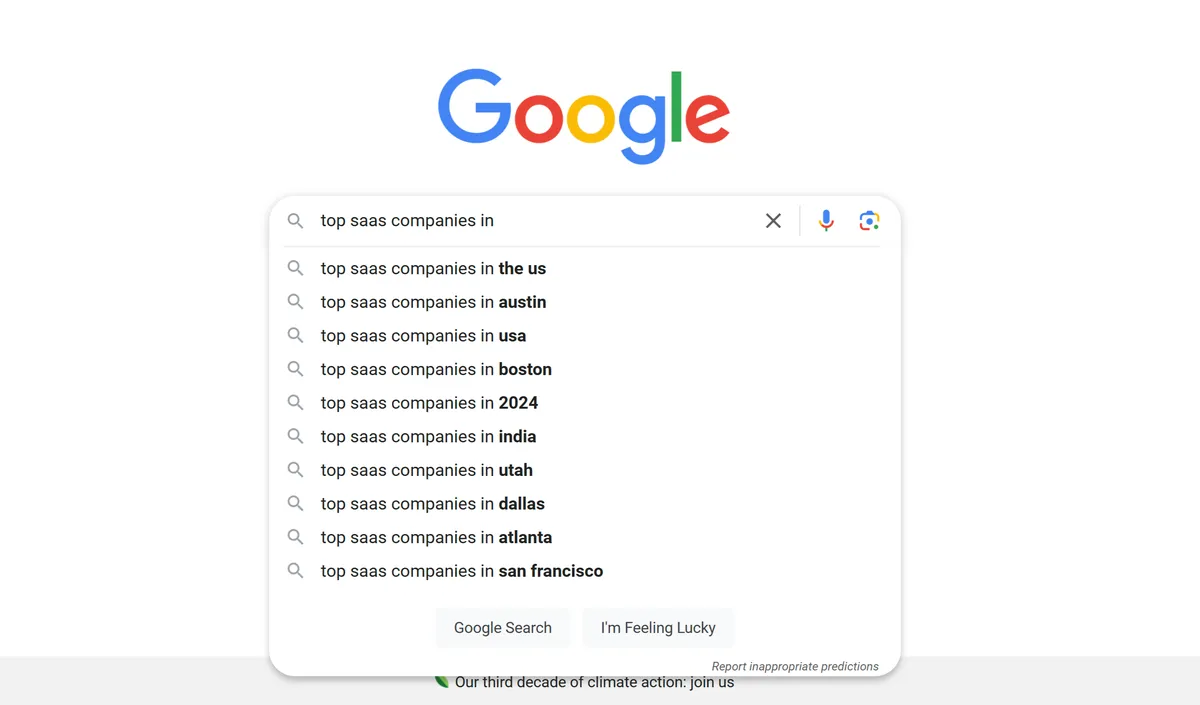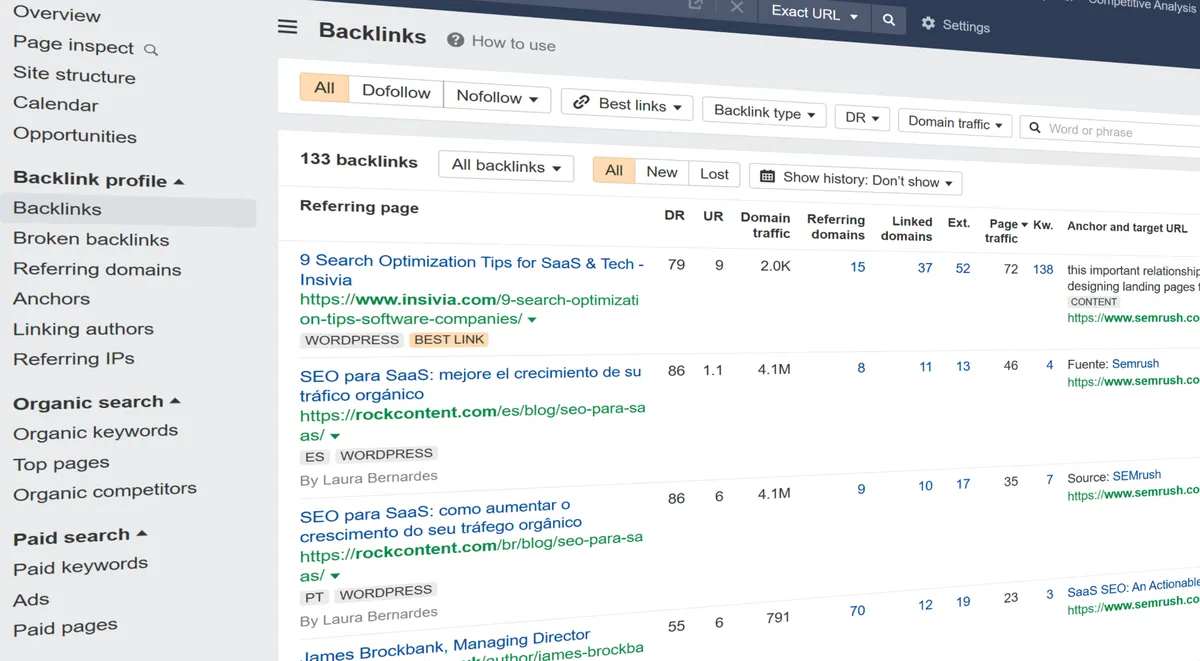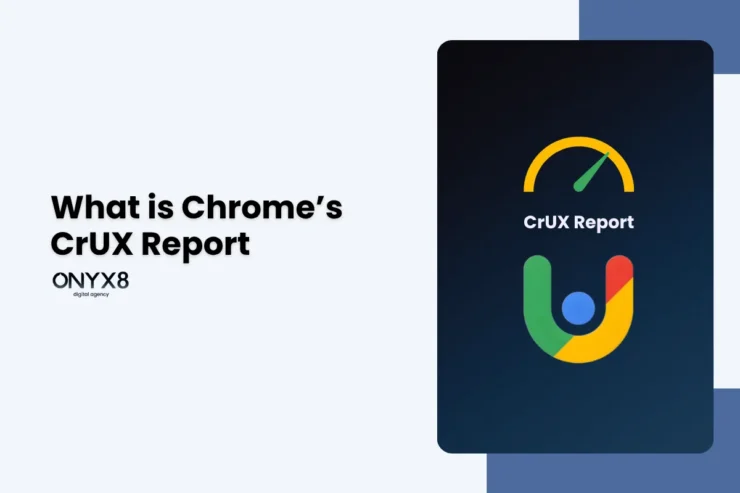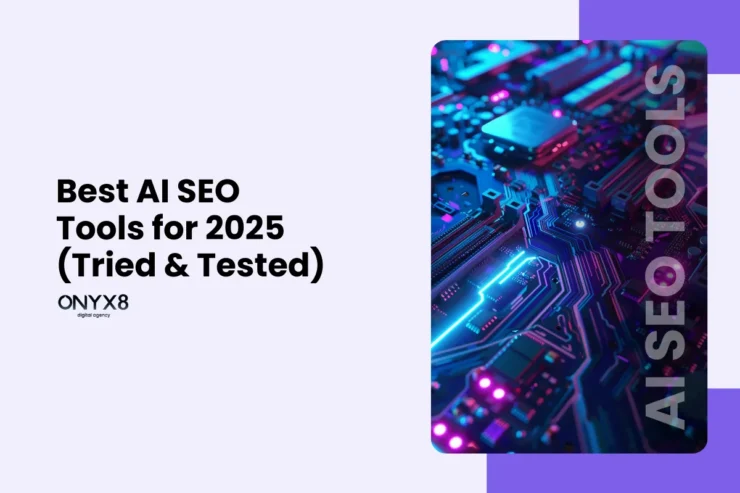How to Build a SaaS SEO Strategy That Works in 2026

A successful SaaS SEO strategy needs creativity and practical, scalable steps. The SaaS sector is expanding quickly, and competition is fierce.
To make your SaaS brand stand out, refine your strategy, and find ways to outsmart your competitors. But don’t cut the corners.
Below, we’ll break down all the steps you need to create a successful SaaS strategy.
We’ll also dish out some insights about each of them.
1. Start with market research
Knowing the audience inside out is fundamental for your SaaS brand.
This means gathering insights from customer personas and their online behaviors.
Commonly, SaaS brands serve a B2B audience.
So, plan for their traits. It will help you create relevant content, keyword targeting, and boost your ROI.
Begin by looking into these key aspects:
- Customer pain points: Identify your audience’s biggest challenges. Then, create a strategy to solve them. Are they looking for cost-effective solutions? Ease of implementation?
- Competitor analysis: It’s time to think outside the box. See where competitors rank and which keywords they target. Try a unique angle rather than going back to the drawing board on common keywords.
2. Select keywords tactically

Keywords are at the heart of SEO, especially for the local SEO.
But a SaaS strategy requires precision.
Instead of targeting broad, high-volume keywords, find niche ones. Focus on the ones that have low competition, high search volume, and clear buying intent.
How to select effective keywords:
- Long-tail keywords: These are often lower in volume but can have a higher conversion rate. Use long-tail keywords that reflect specific SaaS services or solutions.
- Action-oriented phrases: Include phrases that show a readiness to buy. Use, for example, “best project management software for small teams” and “SaaS strategy mistakes.”
- Keyword clusters: Organize related keywords together to build authority around specific topics. Keyword clusters improve SEO by creating a better content structure.
3. Create and optimize for “Zero-click searches”
Many searches now end without users clicking any site. This occurs frequently because Google provides answers directly in the search results.
Optimizing your site for zero-click results, or featured snippets can be one of the best SaaS SEO strategies capturing the market.
Strategies to optimize for no-click searches:
- Answer common questions directly: Use a format optimized for featured snippets. Provide clear answers to FAQs about your software.
- Use lists and tables: Google often shows them in the featured snippets. So using these formats can increase your chances of appearing in In-SERP answers.
- If applicable, claim and optimize your Google Business profile. This will help you show up in local searches.
4. Craft high-quality, actionable content

Content is king, but it’s not about sheer volume – it’s about quality, relevance, and frequency.
Focus on producing content that answers specific questions and solves users’ problems.
Content should include practical steps, how-to guides, and genuine insights.
Here’s how:
- Educational blog posts: Cover key topics related to your product and services. Content that educates builds trust. It can be about the latest SaaS trends or ways to boost productivity.
- Case studies: Showcase real results from actual clients. Prospective buyers often need proof before they commit.
- Webinars and demos: Create videos, like webinars and live Q&As, to address common queries. They’re engaging and can be repurposed into blog posts and infographics.
5. Develop a pillar and cluster content structure
A driving SaaS content strategy must include a plan to maintain topical authority.
The pillar-cluster model can create interlinked pages. It boosts relevance in Google’s eyes.
Here’s how this approach can support your SaaS SEO:
- Pillar pages: These are high-level content pieces on a core topic. “Effective SaaS onboarding techniques” or “SaaS marketing best practices”, for example. They should be thorough and packed with valuable information.
- Cluster content: Link each pillar page to cluster articles on subtopics. Linking these clusters back to the pillar creates a network of related content.
6. Apply technical SEO for better performance
Technical SEO is one of the most important pieces of a SaaS strategy.
For high rankings, your site must be fast, mobile-responsive, and easy to navigate.
Here are some practical insights:
- Page speed: SaaS customers expect speed, especially on mobile. Check your web page with Google’s PageSpeed Insights tool to make sure it’s fast enough.
- Schema markup: Schema helps search engines better understand your content. Use it to highlight reviews, prices, FAQs, and other key details. It’s different for every page.
- Mobile optimization: Many users are researching on the go. So make sure your SaaS site is responsive on all devices. It should load quickly, have easy-to-tap buttons, and a clean interface.
7. Developing link-building and outreach tactics

Link-building is vital to B2B SaaS SEO strategy.
Over 50% of marketing experts think that link building is the most challenging aspect of SEO.
But it takes a plan to get links from high-quality sites.
- Guest blogging/posting: Publish content on niche-related blogs to gain quality backlinks. Aim for sites that cater to your target audience to maximize relevance. That’s what search engines value today.
- Collaborative content: Partner with other SaaS brands on studies or whitepapers. Then, promote the content to both audiences.
- Testimonials and Reviews: Offer to write testimonials for products or services your brand uses. These testimonials often link back to your site and provide a natural way to earn backlinks.
8. Optimize conversion rates through strategic content and CTAs
A high-ranking site is good, but conversions are what genuinely drive returns.
To convert SaaS visitors, focus on two areas:
- CTA Placement
- User Experience (UX).
Your SEO content should guide users through the sales funnel without a hitch.
- Effective CTAs: Ensure CTAs are visible and inviting. Use action-driven language like “Start Free Trial,” “Request a Demo,” or “Get Started Now.”
- UX testing: Regular testing of forms, buttons, and navigation helps boost conversions. A well-placed CTA can increase conversions and ROI.
9. Track, analyze, and adjust SaaS strategy based on data
Analyzing data is a core part of any SaaS SEO strategy.
SEO metrics give clear indicators of success or the call for a fresh start. Regularly evaluating data ensures your strategy evolves with user behavior and market changes.
See what works, what doesn’t, and where there’s room for improvement and reshape your roadmap.
Some key performance indicators (KPIs) to monitor include but are not limited to:
- Organic traffic growth: Identify which content drives the most traffic. Then, research competitors, implement A/B testing, and refine your strategy.
- User engagement: Track metrics like bounce and engagement rates, they show how users engage with content.
- Conversion rates: Identify the top pages by conversion rate and copy successful elements across your site.
10. Budgeting for long-lasting SEO
SEO takes time, patience, and consistent investment.
So budgeting is critical for long-term growth. It will bypass the obligation of cutting corners.
When you plan your SaaS SEO budget, allocate funds to:
- Content creation: Quality content is the smartest investment. Set aside part of the budget for writers, editors, and designers.
- Technical maintenance: Budget for these essentials from speed boosts to schema updates.
- Outreach: Some funds should go to outreach and link-building components. Quality backlinks are key to high search rankings.
You may also like: 15 Best AI SEO Tools for 2025 (Tried & Tested)
11. Maximize local SEO for SaaS companies
88% of people trust online reviews as much as personal recommendations.
![How to Build a SaaS SEO Strategy That Works in 2026 SEO statistics on people trusting reviews [infographic]](https://onyx8agency.com/wp-content/uploads/2024/11/SEO-statistis-on-people-trusting-reviews-infographic.webp)
SaaS brands usually operate online but local SEO can help here. It can boost visibility and attract local audiences if they are local.
For example, using local keywords like “SaaS services in San Francisco” or “Cloud CRM software near NYC. can attract clients wanting nearby vendors for contract talks or local support.
On top of that, add your business to relevant local directories and optimize your Google Business Profile.
Or, for example, participate in local events to engage with nearby audiences.
12. Create product-focused pages
SaaS products often have various modules, tools, or features. Each can rank for different keywords.
So create landing pages for each solution or tool your product offers.
For example, “CRM integrations for SaaS” or “SEO services for SaaS brands.”
How to make these pages effective:
- Optimize for solution keywords: Tailor each page to specific needs or pain points. For example, use “data analytics software for small businesses” or “SaaS billing solutions.”
- Highlight features and benefits: Explain the features and benefits on each page. This will address user needs and boost conversions.
- Testimonials and reviews: Add customer testimonials and reviews since social proof can boost trust and CTRs.
13. Use social media content for increased visibility

Social media doesn’t directly impact SEO rankings.
That said, it can drive traffic, boost brand awareness, and build backlinks.
Strategic social media posts that link to your site can elevate visits.
- Content promotion: Share blogs, case studies, and product updates on LinkedIn and Twitter. Do it in a steady manner.
- Encourage shares and engagement: Create infographics, videos, or shareable snippets. For example, blogs containing infographics produce 178% more backlinks.
- Connecting with Influencers: Team up with industry influencers or micro-influencers. This will boost visibility and earn organic backlinks.
14. Implement effective internal linking
Internal linking is a powerful, but often underused, SEO tactic. It guides search engines through your site and helps properly identify the key pages.
Proper internal linking boosts user engagement by offering them more relevant content.
Effective internal linking involves:
- Strategic link placement: Link to relevant blog posts and product pages throughout your site.
- Use descriptive anchor text: It should be natural and describe the linked page.
- Linking to older content: Link from old blog posts or product pages to newer content. This will refresh their relevance and visibility.
15. Leveraging User-Generated Content for SEO
User-generated content (UGC) can boost SEO using reviews, testimonials, and Q&A sections. UGC provides fresh, unique content and answers customers’ questions.
These elements can boost conversions and increase trust in your brand.
How to apply UGC productively:
- Encourage customer reviews and ratings: Ask for reviews on your product pages. This builds trust and boosts rankings.
- Integrate Q&A sections: Add a Q&A section on key pages. Users can ask and answer questions to keep the page active and updated.
- Feature customer stories: Regularly update case studies to keep content fresh.
Build your SaaS brand’s SEO strategy with Onyx8
Creating a winning SaaS SEO strategy requires comprehensive planning and persistence.
At Onyx8, we entirely understand the SaaS strategy’s delicate nuances.
Our SEO experts can boost your SaaS brand’s search performance and deliver measurable results.
As a professional SEO agency, our services include:
For your SaaS brand’s project, you will get:
- Full ownership
- Complete transparency
- Dedicated project manager
Contact our team to schedule a consultation with one of our experts and build you a working SaaS SEO strategy.





